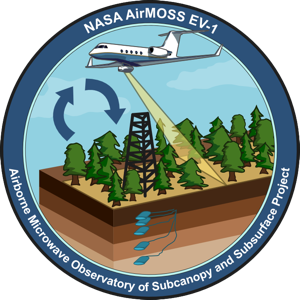
Airborne Microwave Observatory of Subcanopy and Subsurface
North American ecosystems are critical components of the global carbon cycle, exchanging large amounts of carbon dioxide and other gases with the atmosphere. Root-zone soil measurements can be used to better understand these carbon fluxes and their associated uncertainties on a continental scale. The goal of the Airborne Microwave Observatory of Subcanopy and Subsurface (AirMOSS) investigation was to provide high-resolution observations of root-zone soil moisture over regions representative of the major North American climatic habitats (biomes), quantify the impact of variations in soil moisture on the estimation of regional carbon fluxes, and extrapolate the reduced-uncertainty estimates of regional carbon fluxes to the continental scale of North America.
AirMOSS used an airborne ultra-high frequency synthetic aperture radar that has the capability to penetrate through substantial vegetation canopies and soil to depths down to approximately 1.2 meters. For AirMOSS, NASA’s Uninhabited Aerial Vehicle Synthetic Aperture Radar (UAVSAR) was flown on a Gulfstream-III aircraft. Extensive ground, tower, and aircraft in-situ measurements validated root-zone soil measurements and carbon flux model estimates. The surveys provided measurements at 100 meter spatial resolution and at sub-weekly, seasonal, and annual time scales.
AirMOSS responded directly to challenges set down by the NASA Carbon Cycle Science and the North American Carbon Program. Additionally, AirMOSS data provided a direct means for validating root-zone soil measurement algorithms from the Soil Moisture Active & Passive (SMAP) mission and assessing the impact of fine-scale heterogeneities in its coarse-resolution products.
Principal Investigator: Mahta Moghaddam
University of Southern California
Project Manager: Yunling Lou
NASA Jet Propulsion Laboratory, Pasadena, CA
Mission Manager: Anthony Guillory
Langley Research Center (LaRC), Hampton, VA
